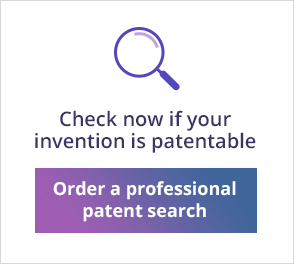
The UK, US and the European Patent Convention (EPC) – Part 2
In the first part of the article, we have briefly discussed basics patents terms (What is a patent right and scope of protection, Priority date, Prior art, The European Patent Convention – EPC, etc.) and
Layed out the 3 basic conditions that make an invention patentable – :
1. Capable of industrial application
2. Completely new
3. Non-obvious/ Involves an inventive step
We then looked at the first condition – Industrial applicability, Utility, and Usefulness as they are defined in the British (Sections 1-6) and US (Chapter 10) patent laws and in the European Patent Convention – EPC (Chapter I).
In the second part, we will dive into the subject of the second condition any inventor must meet in order to get a patent – Novelty.
Novelty
In order to get a patent on an idea, it must be completely and utterly new. In most cases, the patent examiner will spend a large part of the examination process searching different databases (patent and non-patents) to make sure the invention described in a patent application is completely original, and there is no prior art that deems the invention as not new, that is:
Any kind of discloser, anywhere in the world that was made available/ published before the patent application was first filed (patents, patent applications, books, scientific and technological articles, detailed news articles or internet publications, products, public lectures, etc.).
There is a great similarity between the UK, and US laws, and the EPC with each having its small distinctions.
1. The UK’s patent law
The British law definition of novelty and the prior art is simple and straightforward (section 2):
1. (1) An invention shall be taken to be new if it does not form part of the state of the art.
(2) The state of the art in the case of an invention shall be taken to comprise all matter (whether a product, a process, information about either, or anything else) which has at any time before the priority date of that invention been made available to the public (whether in the United Kingdom or elsewhere) by written or oral description, by use or in any other way.
(3) The state of the art in the case of an invention to which an application for a patent or a patent relates shall be taken also to comprise matter contained in an application for another patent which was published on or after the priority date of that invention, if the following conditions are satisfied, that is to say –
(a) that matter was contained in the application for that other patent both as filed and as published; and
(b) the priority date of that matter is earlier than that of the invention.
In simple words – any public disclosure of the invention, in any form, anywhere in the world before the application priority date, is considered prior art.
The British law does stipulate in subsection (4), some explanation regarding prior art that was based on information “..obtained unlawfully or in breach of confidence by any person…from the inventor or from any other person to whom the matter was made available in confidence by the inventor…” up to six months before the inventor filed his application.
2. The US patent law
The US law discusses novelty in section 102 (of Chapter 10).
§102. Conditions for patentability; novelty
(a) Novelty; Prior Art.—A person shall be entitled to a patent unless—
(1) the claimed invention was patented, described in a printed publication, or in public use, on sale, or otherwise available to the public before the effective filing date of the claimed invention; or
(2) the claimed invention was described in a patent issued under section 151, or in an application for patent published or deemed published under section 122(b), in which the patent or application, as the case may be, names another inventor and was effectively filed before the effective filing date of the claimed invention.
As can be seen, the definition of novelty is similar to the British law however, the US law continues to stipulate wither exception:
(b) Exceptions.—
(1) Disclosures made 1 year or less before the effective filing date of the claimed invention.—A disclosure made 1 year or less before the effective filing date of a claimed invention shall not be prior art to the claimed invention under subsection (a)(1) if—
(A) the disclosure was made by the inventor or joint inventor or by another who obtained the subject matter disclosed directly or indirectly from the inventor or a joint inventor; or
(B) the subject matter disclosed had, before such disclosure, been publicly disclosed by the inventor or a joint inventor or another who obtained the subject matter disclosed directly or indirectly from the inventor or a joint inventor.
(2) Disclosures appearing in applications and patents.—A disclosure shall not be prior art to a claimed invention under subsection (a)(2) if—
(A) the subject matter disclosed was obtained directly or indirectly from the inventor or a joint inventor;
(B) the subject matter disclosed had, before such subject matter was effectively filed under subsection (a)(2), been publicly disclosed by the inventor or a joint inventor or another who obtained the subject matter disclosed directly or indirectly from the inventor or a joint inventor; or
(C) the subject matter disclosed and the claimed invention, not later than the effective filing date of the claimed invention, were owned by the same person or subject to an obligation of assignment to the same person.
That is, much wider protection is given to the inventor, for example, if an inventor publishes his invention, he has 1 year of grace to file a patent (unlike Europe and the UK in which even publications made by the inventor are considered prior art, preventing him from getting a patent)
3. EPC
Almost identically to the British law, Article 54 of the EPC concludes:
(1) An invention shall be considered to be new if it does not form part of the state of the art.
(2) The state of the art shall be held to comprise everything made available to the public by means of a written or oral description, by use, or in any other way, before the date of filing of the European patent application.
Very similar to the British law there are few limited exceptions protecting the inventor in article 55, the EPC stipulate:
(1) For the application of Article 54, a disclosure of the invention shall not be taken into consideration if it occurred no earlier than six months preceding the filing of the European patent application and if it was due to, or in consequence of:
(a)[ 45 ] an evident abuse in relation to the applicant or his legal predecessor, or
(b) the fact that the applicant or his legal predecessor has displayed the invention at an official, or officially recognized, international exhibition falling within the terms of the Convention on international exhibitions signed at Paris on 22 November 1928 and last revised on 30 November 1972.
Patent novelty summed up
The novelty principle is simple and direct – any prior art (even by the inventor) will not allow you to get a patent.
This is why conducting a patentability search prior to filing is crucial as it can save a lot of time and money and maximize your chances of getting a patent –
- Professional patent searchers can locate the most relevant prior art by using paid databases and their technological and legal expertise.
- A patentability search costs only a fraction of the whole cost of getting a patent.
- Patentability search mimics the examination process, predicts the patent examiner’s findings, and is thus crucial in helping you to optimize your patent application.
- It can eliminate or dramatically reduce the need for appealing and negotiating (thus saving more time and money).
In the next article, we will discuss the Non-obvious / inventive step condition, and how a professional patent search can help make sure your invention fully meets this condition.

